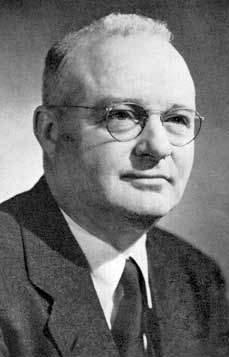Kykja har mista to visjonsbærarar i dette arbeidet, men visjonane er her framleis. Det er vi som er att i kyrkja som må løfte visjonen fram og gjere han verkeleg. Vi må ta opp ballen og føre arbeidet vidare.
Kyrkja er i stadig endring, det har ho vore i 2000 år. Folk kjem til og folk fell frå. Nokre vert fødde, nokre døyr. I desse omskiftingane har kyrkja alltid stått fast, og vil alltid stå fast. Kyrkja er Kristi kropp på jorda, og vi er lemmer på kroppen. Lemmer som skal nå ut til samfunnet rundt oss. Den beste måten å heidre minnet til desse to, og alle andre som har gått føre oss i trua er å jobbe for at kyrkja stadig når nye menneske og stadig er relevant for samfunnet.
Eg sluttar med ei bøn frå ei bok Ove Conrad anbefalte meg medan eg gjekk på Misjonshøgskulen, The Book of Uncommon Prayer.
God, we are on the path. Though it seems we may be alone at times, we know we're on the right path. Your words light our way in the darkness and guide us like the stars. Your truth corrects us, encourages us, binds us, and lifts us up. We are believers in the Word; therefore we are all teachers of the Word. And we are all students. We are all encouragers. We are all lights. Help us to show the world your love. The world is a thirsty place right now, God. The eyes and throats of your children are caked with dust. Help us give them relief , God. Help us give them rest. Transform us into cool water and pour us all over your tired, thirsty children so that the world may see your love through us. Even to those who mock us and hate us. Giving your love to the world is like trying to empty the ocean with a spoon: There's way more of your love than we can imagine. Let us bring your water to the world. Those who walk in the desert will listen. And they will drink. Amen.[1][1] Steven L. Case, The Book of Uncommon Prayer. Contemplative and Celebratory Prayers and Worship Services for Youth Ministry, Youth Specialies, 2002. Side 77.

-_Male_breeding_plumage-_in_Hyderabad,_AP_W_IMG_7714.jpg)







